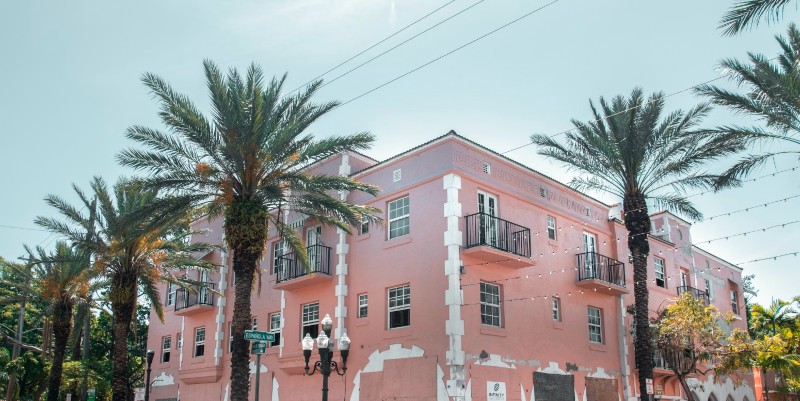I was born in the Bronx, N.Y. to a Cuban father and a Puerto Rican mother. We lived in a Spanish–speaking neighborhood, but just before I turned four, we moved to a small town in New Jersey. That was in the early 1950s, and, as far as I know, we were the only Latin family for miles around. I was raised mostly among Irish and Italians and spoke only English.
I became a newspaper journalist, and in the early 1990s I moved to Florida to work as a reporter for The Miami Herald. At that point, I had lived for years in Mexico and in Central America—where I was a foreign correspondent—and had relearned Spanish. Along the way, I published three stand-alone crime novels but wanted to embark on a series. I forged a plan to learn enough about Miami and South Florida—especially its various Latin American and Caribbean populations—to write a series of detective novels set in those communities. My protagonist would be a Cuban American former police detective turned private investigator.
I decided that the first book should be about the Cuban exile population, the largest of the immigrant communities in the region and the most politically and economically dominant. But what to write? Neither my upbringing nor my previous journalistic experience had taught me much of anything about Cuba, certainly not what I would need to know to write a novel. Of course, I was absorbing a certain amount of “Cubanía”—Cubanness—just by living in Miami, but that had not yet provided me with an idea for a book.
Then fate stepped in. The city editor at the Herald assigned me cover the Cuban community full time, including its culture and rowdy politics. I was reporting one story or another months later when I first heard mention of an episode in Cuban exile history called “Los Niños Pedro Pan”—in English, “the Peter Pan kids.” I did research in the newspaper’s library and found that soon after Fidel Castro and his followers took power in Cuba in 1959, some families started smuggling their children out of the country. They were afraid that Castro, who was forming close relations with the Soviet Union, would start sending their kids to schools in Moscow or otherwise indoctrinate them in communist ideology. With the help of the Catholic Church and foreign diplomats, children were provided with false travel visas and placed on planes leaving Cuba to the U.S. Because they were minors flying by themselves, they became known, secretly, as the Peter Pan kids.
I learned that more than 14,000 children—ages 6 to 17—had been smuggled out of Cuba in that way during the early 1960s, before the Cuban government cracked down. Some lived with relatives already in the U.S., but many grew up in foster homes and orphanages for years while negotiators tried to win their parents the right to leave the island. I interviewed the Catholic priest who ran the camp in Miami where the children first arrived, Monsignor Bryan Walsh, and he led me to many of the ”kids,” now grown. I heard first-hand of their fears, their anguish about their parents and their resilience. A plot took hold in my mind: the story of one of those kids—Roberto Player—whose parents were murdered in Cuba before they could reunite with him in the U.S. and his unrelenting search for their killer or killers.
I decided Roberto’s parents had been casino owners and that led me to other invented characters who were present in Cuba at the time and who might have had dealings with the murdered couple. They included members of the Italian Mafia, who had helped run the gambling industry in Cuba under the previous government and were kicked out by Castro. (The lead Miami mafioso, Cosimo “Cozy” Costanza, is one of my favorite characters in the book.) Also playing roles are a secret agent for the Castro government who worked as a croupier in the Players’ casino and later defected to Miami; a former Cuban showgirl, a legendary beauty from the legendary days of Cuban nightlife; a man who was the most effete of playboys in old Havana but later became a uncompromising anti-Castro guerrilla leader; and a CIA agent who had worked undercover out of the U.S. Embassy in Cuba, and also got to know the Players.
My detective, Willie Cuesta, is hired by Roberto’s fiancée to keep him from getting killed. Why the surname Cuesta? Because many years ago I read an article about Dashiell Hammett and how he had wanted to turn the character of the private investigator into a modern version of knights errant, who in medieval times went on “quests” to slay dragons and rescue damsels in distress. The moment I remembered that anecdote, the Spanish surname Cuesta popped into my head, and moments later Willie Cuesta was born. From the get-go, he has proven to be compassionate, good humored, resourceful and, yes, valiant. I have subsequently published four other novels and a volume of short stories featuring Willie. Another novel will, hopefully, be out next year.
But it all started with Player’s Vendetta. This was Willie’s first quest. It’s back in front of the public in a new edition from my publisher Arte Publico, and I hope folks enjoy it.
***


















